Fig. 4b Jet’s supplies
The following photos are of the supplies and type of restraint used during the treatment of Jet’s abscess and infected ear.
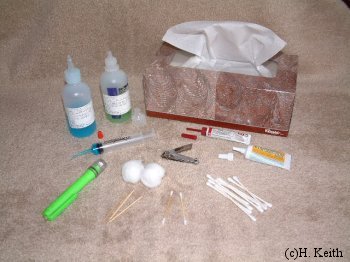 |
Photo 1: Shows a layout of all the supplies used during Jet’s treatments. |
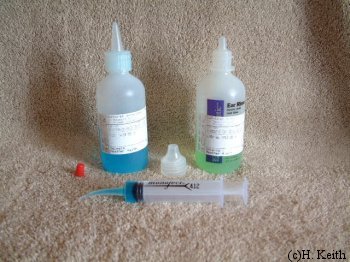
|
Photo 2: Shows the solutions Chlorhexidine 2% (blue) and Aloecetic Ear Solution along with the syringe we used for flushing. The syringe contains the “dose” the vet recommended that should be used for flushing. |
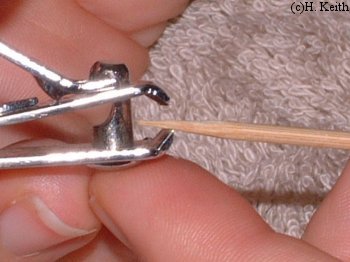
|
Photo 3: Shows how to clip the end off a toothpick to make a small swab (the commercial swabs were often too big). |
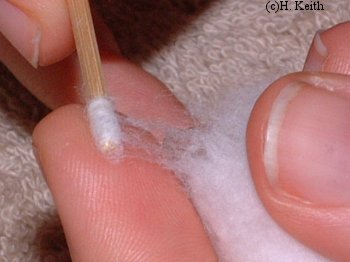
|
Photo 4: Shows the process of winding the cotton from a cotton ball to make a rat-sized swab. |
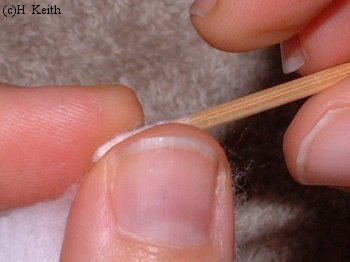
|
Photo 5: Again shows the process of winding the cotton from a cotton ball to form swab. |
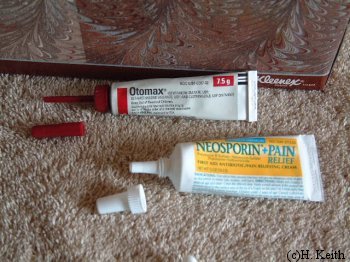
|
Photo 6: Shows the ointments used; the Otomax during first went to the vet, and Neosporin later to treat her ear flap that got “nicked” by the radiosurgery. (We used that once or twice and it really sped the healing process at that location.) |

|
Photo 7: Shows the items used for flushing sessions. Antibacterial solutions, the syringe, commercial swabs, little swabs, and lots and lots of tissues to catch/wipe up the extra solution from her fur (to avoid discouraging her from grooming) and keep it from getting into her eyes. |
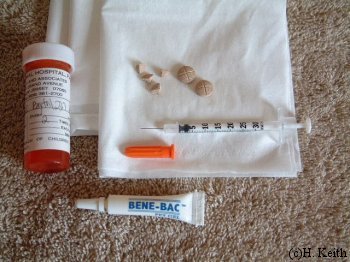
|
Photo 8: Shows Baytril 22.7mg tablets, whole and quartered (the rough dosage for a 1lb rat). It also shows our penicillin one-use needle (unfortunately, we no longer have a vial of penicillin) and a tube of Bene-Bac which we administered once a day when her stools loosened due to her antibiotic meds. |
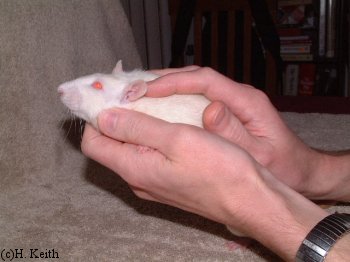 Photo 9: Shows how Jet was restrained for procedure. In this case, the right hand restrains the butt (they always want to go backward), the back feet are firmly on the towel (they feel MUCH more secure this way), the front feet are caught between the fingers of the left hand (when possible), and the fingers of both human hands spread the skin away from the abscess to open it, mostly with the left thumb pulling the cheek skin down. (Also a good way to look into the ear canal if you need to – hence the little “wee torch” flashlight shown in Photo 1.) We developed this position after a lot of trial and error. Jet told us (non-verbally) this is the way she liked it, and it’s worked on every rat we’ve held that way since. We go “low and slow” and the rats don’t freak out. You say calm, they stay calm. For the most part. |
Photos courtesy of H. Keithhttp://members.verizon.net/~vze496tv/rats.htm


